 |
 |
 |
Bactria and Sogdiana,
which prospered along the Oxus River in Central Asia, were known since
ancient times for supplying precious metals and stones as well as for
bridging the ancient cultures of Mesopotamia and the Indus. Since
Alexander’s expedition east, these areas have been important
civilizations in bringing together the cultures of the Mediterranean,
West Asia, India, and Scythia. The Sogdians, who were central to Silk
Road trade at the beginning of the Middle Ages, transmitted these unique
Central Asian cultures to the East and in time influenced the creation
of the cosmopolitan culture of the Tang dynasty.
This exhibition features five ancient Bactrian and Sogdian masterpieces from the Tajikistan National Museum of Archaeology as well as over a hundred pieces from ancient Persia to Tang-dynasty China that covers a period of more than a thousand years. We hope that visitors to the museum will be able to sense the universal longing for happiness in the undercurrent of this extensive cultural exchange.
This exhibition features five ancient Bactrian and Sogdian masterpieces from the Tajikistan National Museum of Archaeology as well as over a hundred pieces from ancient Persia to Tang-dynasty China that covers a period of more than a thousand years. We hope that visitors to the museum will be able to sense the universal longing for happiness in the undercurrent of this extensive cultural exchange.
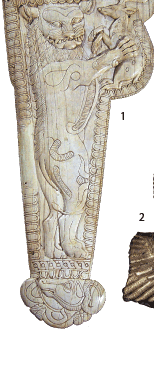 |
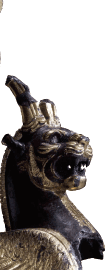 |
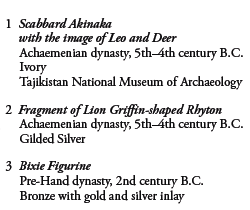 |
|
|
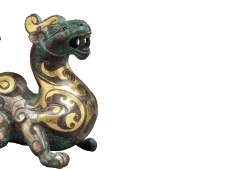 |
|
|||
 |
 |
|
||
The Lion-Griffin and the
Bixie Lion-griffins, symbolic protectors that purge evil in Persia from the time of the Achaemenian dynasty, were transmitted to China via Scythia. In China, these creatures also became bixie, sacred guardians against evil. |
||||
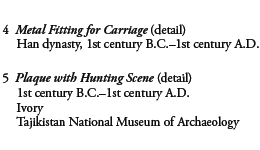 |
4
 |
 |
| 5 | 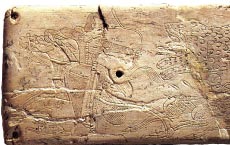 |
|
Hunting Motifs |
||
Ancient Iranian nobility practiced hunting in enclosed areas. According to some theories, the word for this hunting area is the root of the word for “paradise.” From early times, designs of hunting have been associated with images of a paradise after death. |
||
6
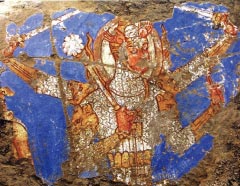 |
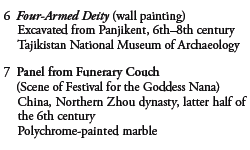 |
|
7 |
||
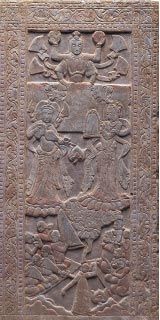 |
||
Multi-Armed Deities The Sogdians of Central Asia borrowed images of Indian gods to depict their own deities. The multi-armed gods were originally gods of combat and protective deities. Figure 6 is thought to represent a heroic god, while figure 7 appears to be the mother goddess Nana who is closely associated with funerals. The latter figure especially appears to be a decorative element on funerary objects of the Sogdians who settled in China through trade. |
||